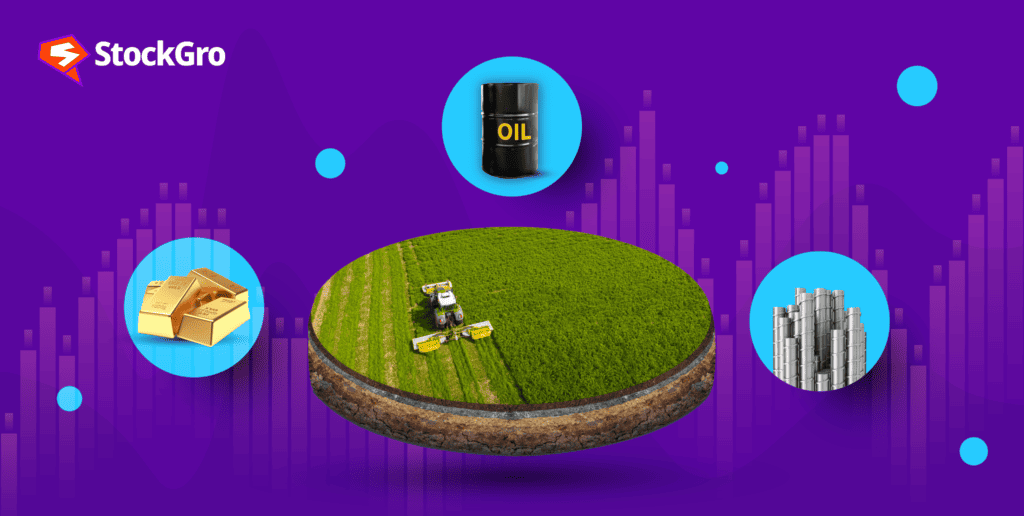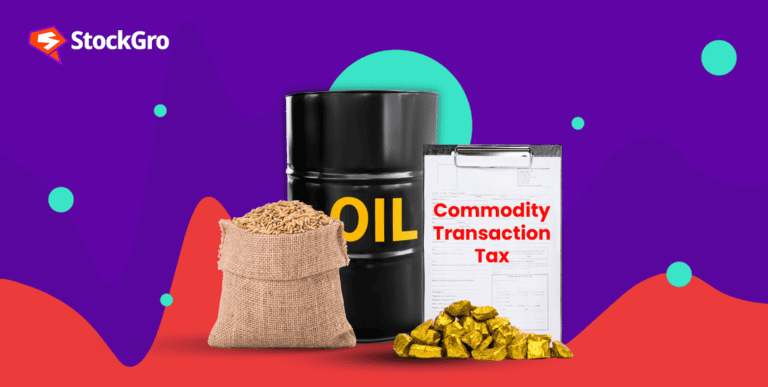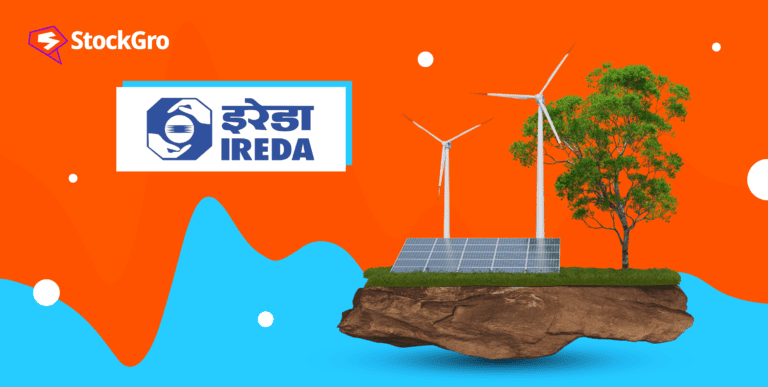
While stocks are a prevalent financial instrument in India and worldwide, it’s common to overlook commodities while building an investing portfolio. However, diversifying your portfolio and boosting revenue may be achieved by investing in various commodities. Given their tendency to fluctuate in value over time, commodities can yield healthy long-term returns when invested wisely.
You may invest in everyday necessities and precious metals through online commodities trading, and you can profit each time their value rises or falls. Short-sell trades allow you to sell high and purchase cheap, whilst long trades allow you to profit from a price gain.
But before we jump into the depths of investing in commodities, let’s understand what commodities are at first.
Also read: What is Commodity market?
Understanding commodities
Any fundamental good that can be substituted for other commodities of the same kind and is utilised in trade is called a commodity. Commodities, which are the foundation of the worldwide economy, include a range of goods, such as metals like gold and silver, energy products, as well as agricultural products. Conversely, “soft” commodities—such as sugar, cotton, cocoa, and coffee—cannot be kept in storage for extended periods.
In India, there are generally four categories into which the many kinds of commodities sold fall.
| Commodity category | Examples |
| Energy | Oil and natural gas |
| Base metals | Copper, zinc, aluminium, lead |
| Bullion | Gold and silver |
| Agriculture | Cotton, rubber, oil, black pepper, cardamom, and more |
Source: Forbes
Most of the time, commodities are utilised as inputs to produce other items or services. In light of this, the phrase often refers to a raw material used to produce finished goods. Conversely, a product is the final thing that is sold to customers. There are various different ways for investors to participate in the commodities futures markets.
Commodity investing: what is it?
Investing in commodities may be done in several ways. One option is to buy different quantities of physical raw materials. Additionally, investors can use exchange-traded products (ETPs) or futures contracts that track a particular commodities index directly. It is often advised that only experienced investors make these intricate and highly volatile transactions.
Additionally, you may purchase stocks in companies that deal with commodities, including those that generate gas and oil or mine precious metals. When investing in commodities, ensure you know the potential risks, as they may be highly volatile. Investing in mutual funds that make investments in companies involved in commodities is another option to get into commodities.
Here is a list of prominent exchanges in India that oversee all commodities in India:
| Commodity exchange name | Year of establishment | Commodity traded |
| National multi-commodity exchange | 2002 | Gold, aluminium, copper, mustard, rubber, jute, coffee, etc, |
| Multi-commodity exchange of India | 2003 | Metal, bullion, energy, pulses, etc. |
| National commodity and derivatives exchange Ltd. | 2003 | Fibres, oil, crude oil, steel, copper. etc. |
| Indian commodity exchange | 2009 | Gold, silver, copper, natural gas, etc. |
| Universal commodity exchange | 2013 | Chana, mustard, soybean, turmeric, etc. |
Source: Forbes
The Securities Exchange Board of India (SEBI), amalgamated with the Forward Market Commission in 2015, oversees all exchanges operating within the Indian commodities market and is responsible for the CDMR (Commodity Derivatives Market Regulation).
Also read: Gold vs Equities- Which is the right investment option?
How to invest in the commodity market?
Those who want to invest in commodities can purchase the goods directly, futures contracts, shares in the businesses that produce them, or exchange-traded funds (ETFs).
- Future contracts
Futures contracts are agreements to purchase or sell a certain quantity of a good at a specific price on a future date. Though it’s not the simplest way to invest in commodities, purchasing them through futures contracts may be the most well-known approach. Because futures provide a high level of risk and return when speculating on a particular commodity, some dedicated traders are drawn to this market.
The following chart shows the comparison between Indian stock exchanges regarding commodity-wise turnover and trading volume in July 2023 and August 2023.
Source: SEBI
With futures, you may easily gain (or lose) a fortune by using leverage to open a contract for a comparatively small initial investment. This is a cost-effective strategy to speculate since, if the deal goes your way, you won’t even need to add extra money to the contract.
- ETFs
Investing in one or more commodities at once may be done conveniently with ETFs. Investing in exchange-traded funds (ETFs) gives you direct exposure to real commodities without the burden of having to buy the products yourself or trade them on the futures marketplace.
Investing in gold or silver exchange-traded funds (ETFs) is one way to gain exposure to precious metals. Since ETF units are kept virtually in your demat account, there won’t be problems with integrity or safekeeping.
Buying an exchange-traded fund (ETF) that holds a portfolio of commodity producers is an additional method to obtain diversified exposure to them. Along with reaping the rewards of variety, you might be able to expose yourself specifically to producers of a certain item.
Also read: Meaning of commodity swap
- Owning physical commodities
Precious metals are the primary items that may be owned in tangible form. Among the most well-known commodities that are utilised as tangible stores of value are gold and silver. The biggest risk associated with direct possession of precious metals is theft. Therefore, you should take precautions to ensure that anything valuable is well-protected.
- Shares of commodity producers
You might choose to invest in commodity producers instead of actual commodity owners if you still wish to benefit from rising commodity prices. Producers provide two benefits to investors. Firstly, the underlying company’s earnings normally increase in response to a rise in the commodity price. Secondly, the business might gradually raise output in order to boost earnings. Thus, there are two ways that you might profit from commodities.
Spot vs. futures market: What’s the difference?
Commodity investing may be done in a variety of ways, with one key contrast being between the spot and futures markets.
Commodities are exchanged on the spot market for prompt delivery, which means that the buyer pays the going cash price and gets the item quickly. The spot price of a commodity is a reflection of its market supply and demand.
In the futures market, goods are exchanged for delivery at a later time. This implies that although the buyer and seller agree on a price now, the actual exchange and payment will take place on a predetermined date in the future. The spot price plus the carry cost—which covers interest, storage, insurance, and other costs—are the two factors that determine the futures pricing.
Let’s look at the table below to understand how spot markets differ from futures markets.
| Spot market | Futures market |
| Commodity is traded for immediate delivery | Commodity is traded for delivery at a future date |
| Buyer pays the current cash price | Buyer and seller agree on a price today |
| Spot price reflects the current supply and demand | The futures price reflects the spot price plus the cost of carry. |
| Delivery is compulsory | Delivery is optional |
| Market is dependent on geography | Market is global |
| Market is less liquid and more volatile | Market is more liquid and less volatile |
| Market is suitable for physical users and producers | Market is suitable for speculators and hedgers |
Conclusion
There is no denying that adding commodities to your portfolio can help it become more diversified. Yet, there are benefits as well as drawbacks to commodity trading. Investing in commodities can come with exposure to different sectors of the economy, hedge against inflation, and diversify your portfolio.
However, commodity trading also involves high volatility, leverage, and speculation, which can increase the risk of losing money. Therefore, it is always a good idea to grasp the basics and determine your risk appetite before investing in commodities.

